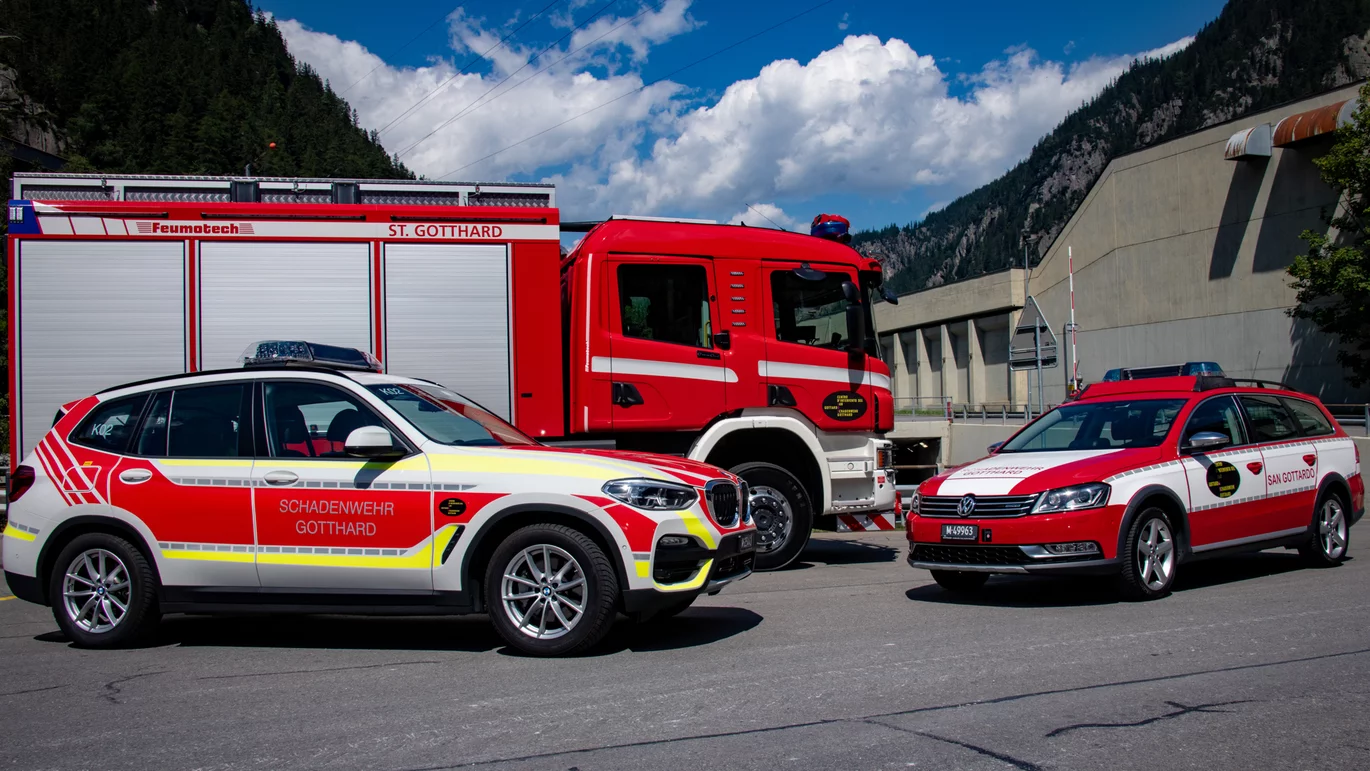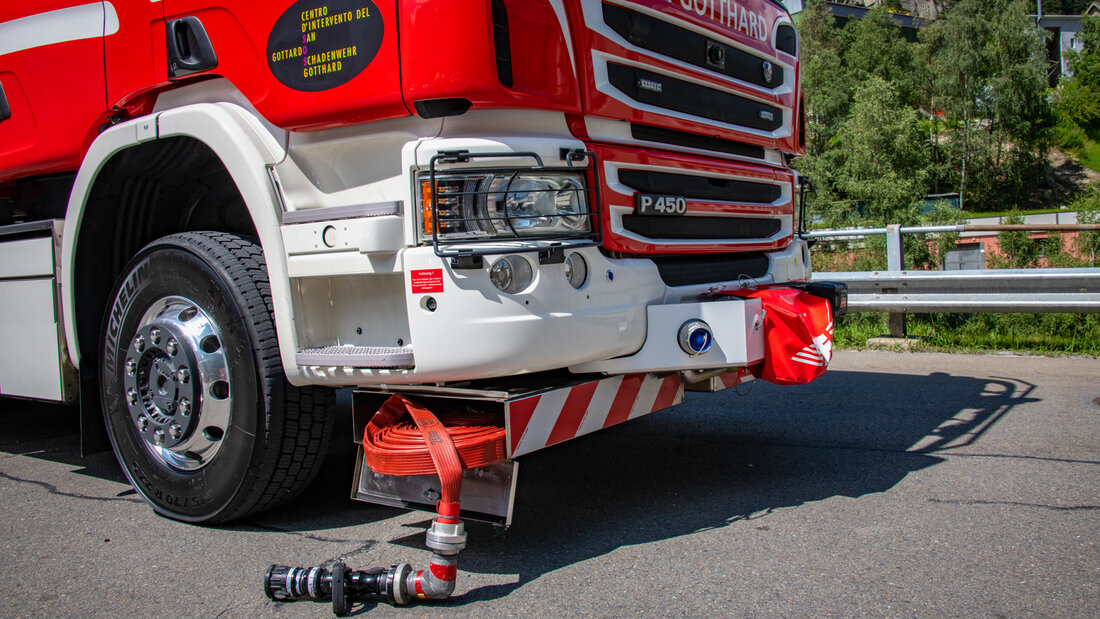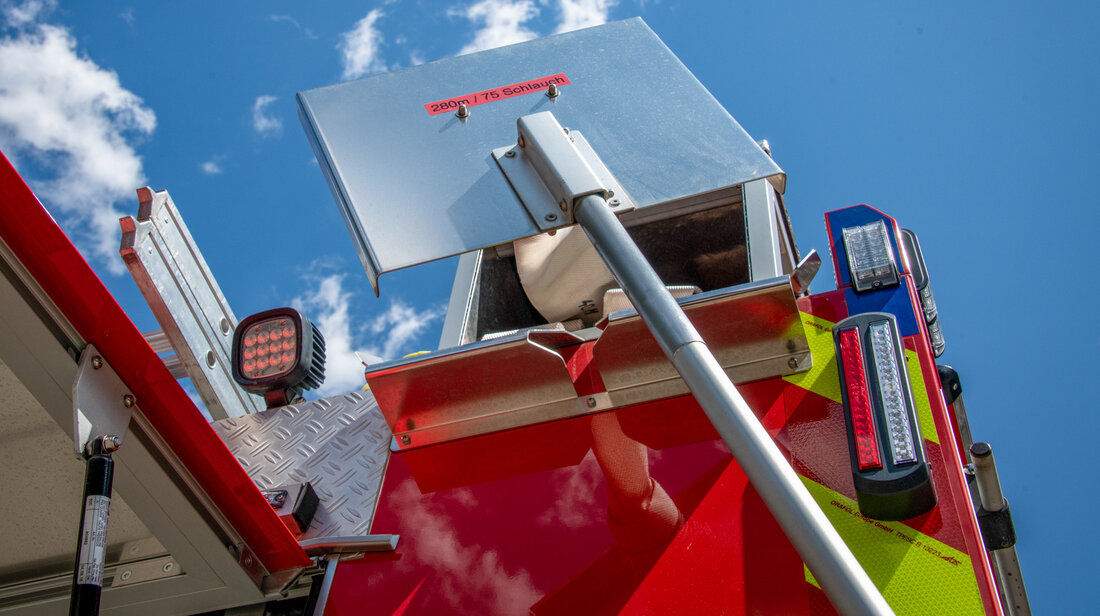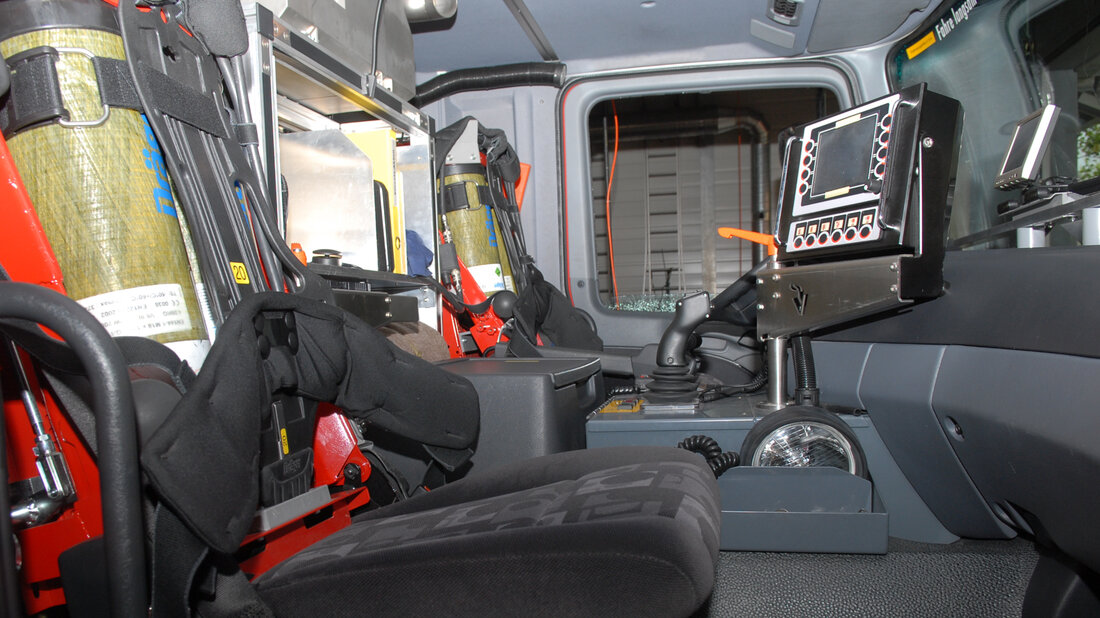24 October marks the 20th anniversary of the major fire in the Gotthard Road Tunnel. After the collision of two articulated lorries, an electrical short circuit caused a fire to break out in one of the tractor units, which quickly spread to five other lorries. Eleven people lost their lives. We wanted to know how the Gotthard portal fire service has changed since this incident and visited the deputy commander of the Schadenwehr Gotthard, Beat Walther, at the Göschenen depot.
Organisation, tactics, training, experience
From Beat Walther's point of view, the main developments of the Schadenwehr Gotthard are the change from a militia to a professional fire service, the refined tactics, the much more comprehensive training and the extensive experience of the firefighters. In the almost 17 km long main tunnel of the Gotthard route alone, the Schadenwehr Gotthard carries out an average of six fire operations per year. In addition, there are fire operations on the open section and in the tunnels and galleries of the approaching ramps between Amsteg and Göschenen on the north side and Faido and Airolo on the south side of the Gotthard Road Tunnel and on the open section and in the tunnels and galleries of the pass road, as well as technical assistance in traffic accidents. All of this adds up to an average of 70 fire and assistance operations per year.
Another task is towing: The Schadenwehr Gotthard tows around 300 broken down vehicles out of the two-lane Gotthard Road Tunnel every year. Approximately 30 of them are lorries whose recovery, reports Beat Walther, «can sometimes take an hour and a half and puts us under a lot of time pressure because traffic often has to be completely closed during this time.» From a purely statistical point of view, the members of the Schadenwehr Gotthard are deployed at least once a day and are, therefore, very familiar with the operation and technology of their tunnels.
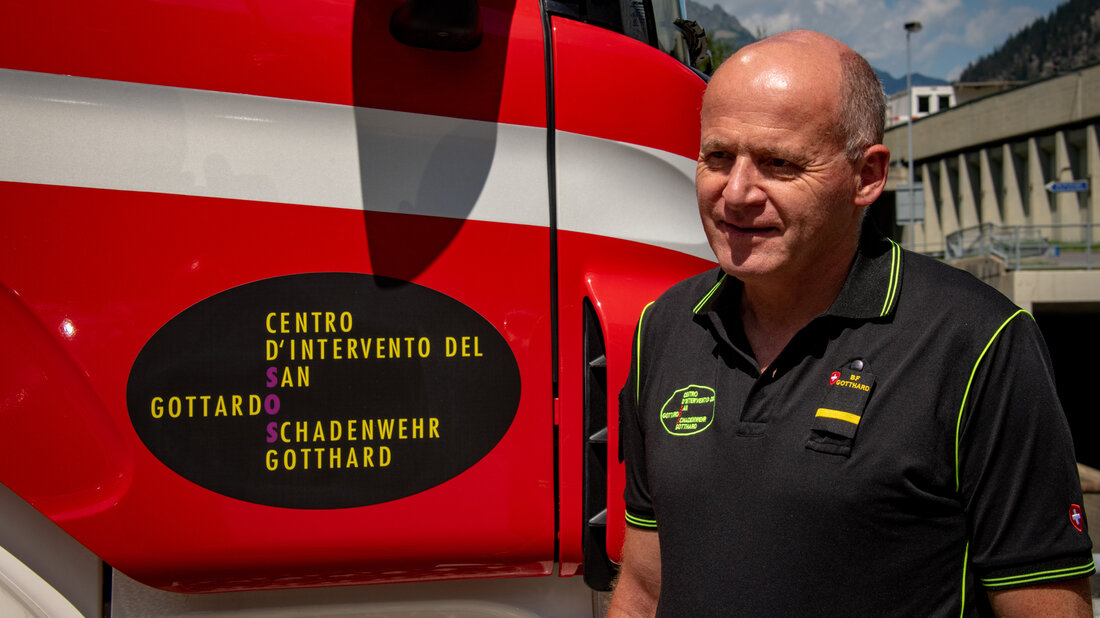
Since 2008: Schadenwehr Gotthard
Until the end of 2007, the fire service at the Gotthard Road Tunnel was provided by a militia organisation with the employees of the depots in Göschenen and Airolo. In addition to the daily maintenance work for the complex tunnel system, there was little time for the training, which is why the switch to a professional fire service was made. To this end, the Federal Roads Office (FEDRO) commissioned the Armed Forces Logistics Base (LBA) to set up the Gotthard damage control unit (Schadenwehr Gotthard). In the beginning, the Service had 36 employees. There are now 68. In addition to the fire service, including training and maintenance of vehicles and equipment, the Schadenwehr Gotthard is also responsible for special permits and route surveys for special transports and vehicles on Swiss national roads.
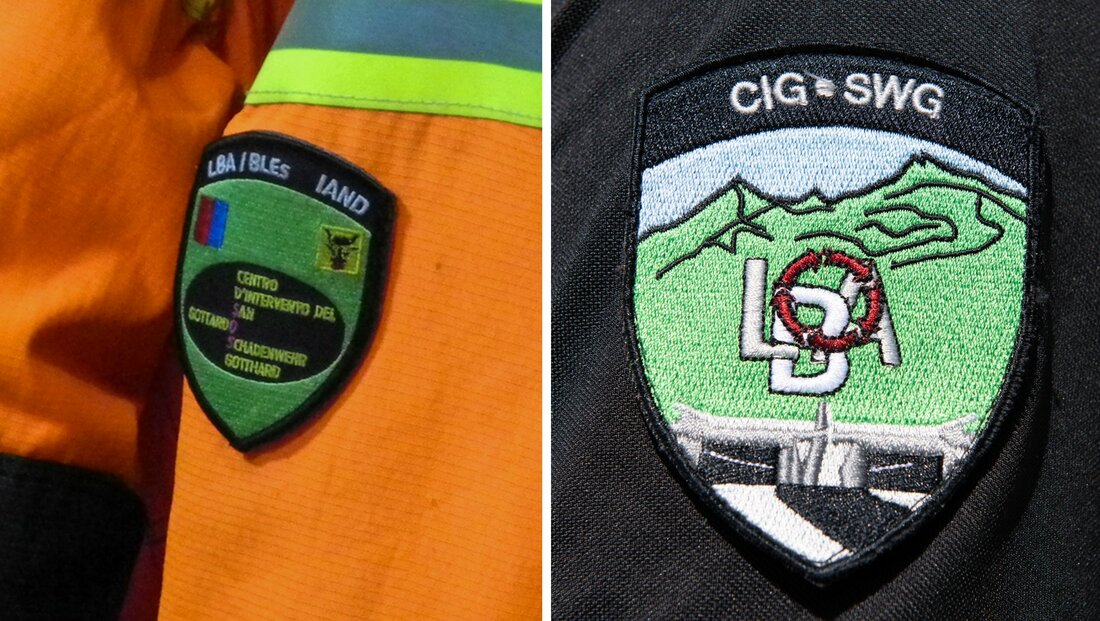
Putting everything to the test
At the beginning of the 2000s, many fire services were uncertain about responding to tunnel fires. After the fires in the Mont Blanc and Tauern road tunnels, a task force set up by FEDRO had already concluded that the fire services needed a training tunnel in which they could prepare for operations in road tunnels at a concrete object. After the major fire in the Gotthard Road Tunnel, efforts to improve the training of the tunnel fire services were once again intensified.
Beat Walther is convinced that the current state of fighting tunnel fires without that Incident of October 24, 2001 «Would not have been achieved, and probably the Schadenwehr Gotthard would not exist in its current form either». The evaluation of the operation of the Gotthard Tunnel Fire showed that tactics and technology and the training and organisation of the fire services had to be fundamentally tested. This insight led to close cooperation between the Schadenwehr Gotthard and the Didactics and Development Team of the International Fire Academy. The jointly prepared case study «Gotthard 2001» is still one of the most important teaching materials of the International Fire Academy today, from which many fire services from all over Europe have already been able to derive significant benefit.
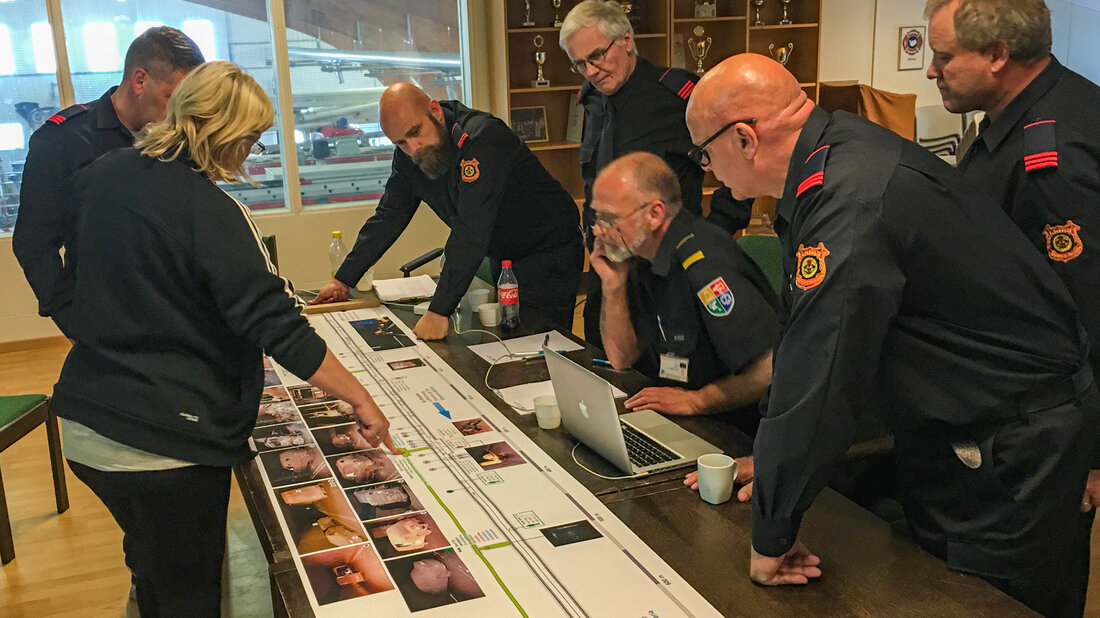
Schadenwehr Gotthard as a touchstone for practical application
Close cooperation with the Schadenwehr Gotthard and many other fire services has resulted in the International Fire Academy's Road Tunnel Firefighting Procedure. The Schadenwehr Gotthard plays a unique role in its implementation and further development. As a fire service with a large number of tunnel fire operations, it can provide continuous feedback on whether the training fits the practical requirements. The tactical principle of «extinguish in order to rescue» and the two-sided attack, for example, have proven their usefulness. For the latter, the Schadenwehr Gotthard deploys a specialised firefighting vehicle and a support vehicle, each with a crew of two firefighters, from both sides of the tunnel.
The most significant progress, Beat Walther sums up, is probably «that today we know exactly how we want to proceed and can therefore also proceed in a targeted manner and very quickly». Nevertheless, the training does not cover everything. «Every operation is different, and there are always new surprises,» says Beat Walther, «for example, when you want to open the door of a burning vehicle, and suddenly you have the melted door handle in your hand.» However, it is not only the vehicle fires that demand a lot of experience and skill. In the bi-directional traffic of the Gotthard Road Tunnel, serious head-on collisions occur time and again, requiring hours of mentally stressful operations.
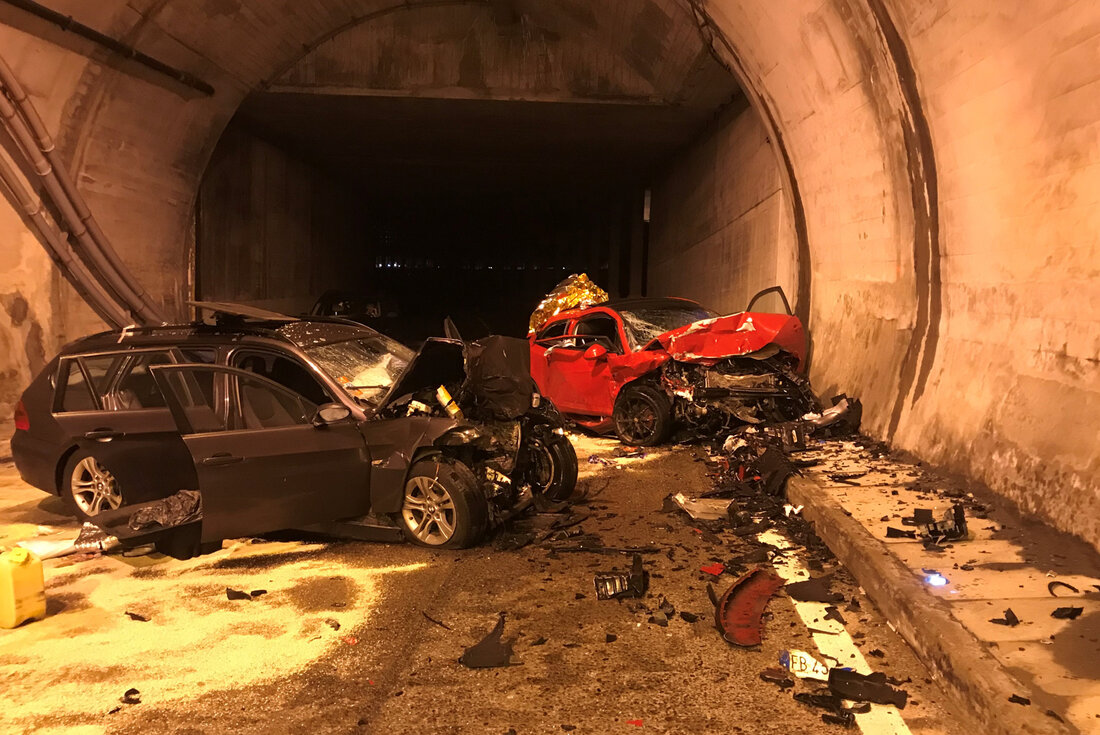
Not every technical innovation has proven to be effective
The Schadenwehr Gotthard is also constantly developing technology, although not everything has proven itself in practice. For instance, after the fire incident in October 2001, a large mobile fan was developed on a Piaggio chassis, which can also drive through the much narrower safety tunnel. Beat Walther: «Technically, it worked, but it was unsuitable in terms of ventilation tactics.»
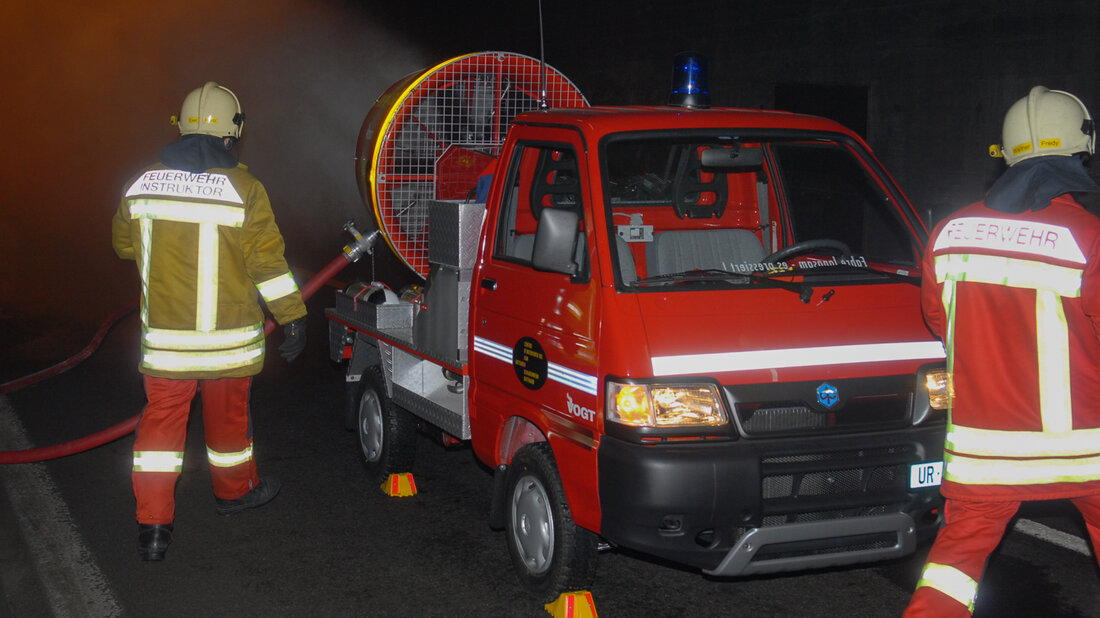
Among the biggest technical attractions are the two fire apparatuses with a hydraulic ram in the middle of the vehicle that can be extended downwards and on which the vehicle can be rotated in the tunnel. The idea was to be able to safely turn the emergency vehicle in the narrow tunnel if necessary. Was this technique ever used, we asked Beat Walther, who answered with a wink: «Yes, for demonstrations to our visitor groups.» In real life, the turning mechanism was never used because it was too complicated and too time-consuming, especially under operational conditions.
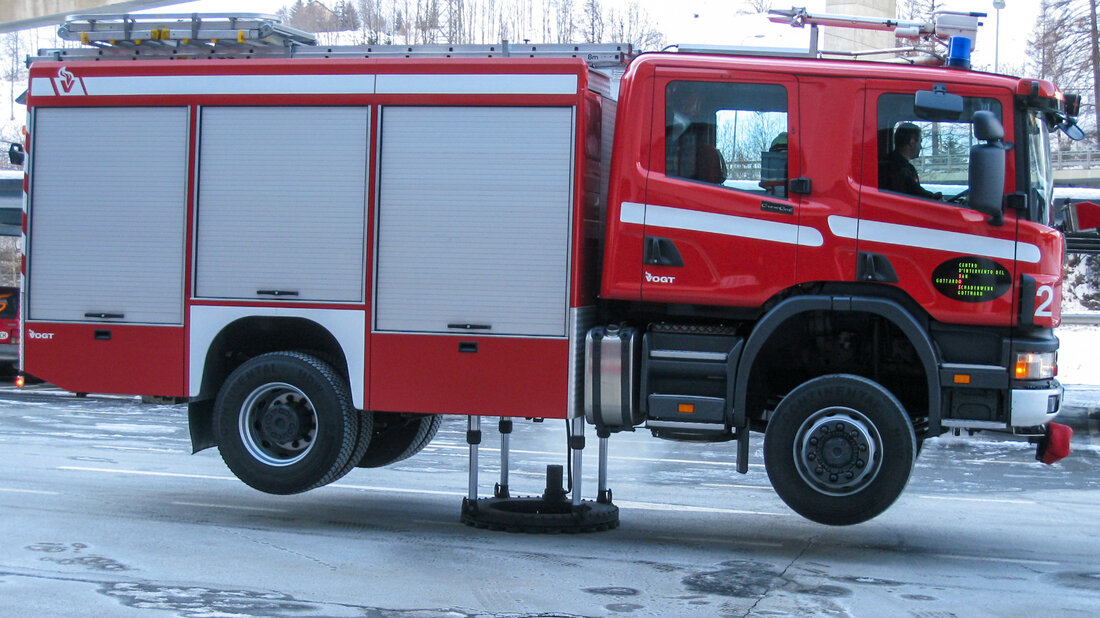
On the other hand, many technical details prove to be really helpful, with which the low number of firefighters can be at least partially compensated. For example, a quick attack under the front apron of the fire apparatus, thanks to which the firefighting attack can be initiated from the front and thus faster than from the rear. Or a 280 m long transport line laid on the roof, which can be pulled down by one firefighter and laid whilst the vehicle is moving.


